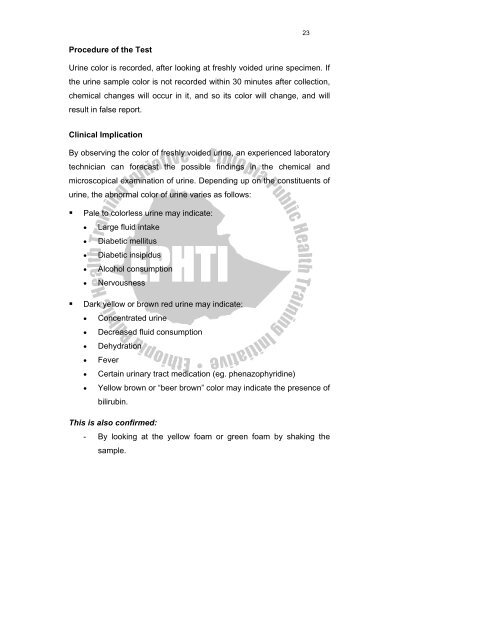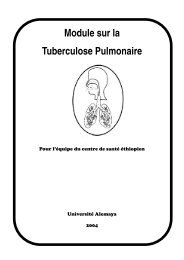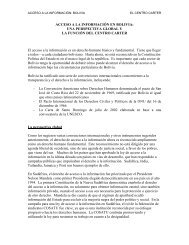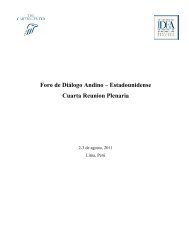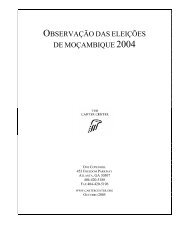Urinalysis - The Carter Center
Urinalysis - The Carter Center
Urinalysis - The Carter Center
Create successful ePaper yourself
Turn your PDF publications into a flip-book with our unique Google optimized e-Paper software.
23<br />
Procedure of the Test<br />
Urine color is recorded, after looking at freshly voided urine specimen. If<br />
the urine sample color is not recorded within 30 minutes after collection,<br />
chemical changes will occur in it, and so its color will change, and will<br />
result in false report.<br />
Clinical Implication<br />
By observing the color of freshly voided urine, an experienced laboratory<br />
technician can forecast the possible findings in the chemical and<br />
microscopical examination of urine. Depending up on the constituents of<br />
urine, the abnormal color of urine varies as follows:<br />
• Pale to colorless urine may indicate:<br />
• Large fluid intake<br />
• Diabetic mellitus<br />
• Diabetic insipidus<br />
• Alcohol consumption<br />
• Nervousness<br />
• Dark yellow or brown red urine may indicate:<br />
• Concentrated urine<br />
• Decreased fluid consumption<br />
• Dehydration<br />
• Fever<br />
• Certain urinary tract medication (eg. phenazophyridine)<br />
• Yellow brown or “beer brown” color may indicate the presence of<br />
bilirubin.<br />
This is also confirmed:<br />
- By looking at the yellow foam or green foam by shaking the<br />
sample.


